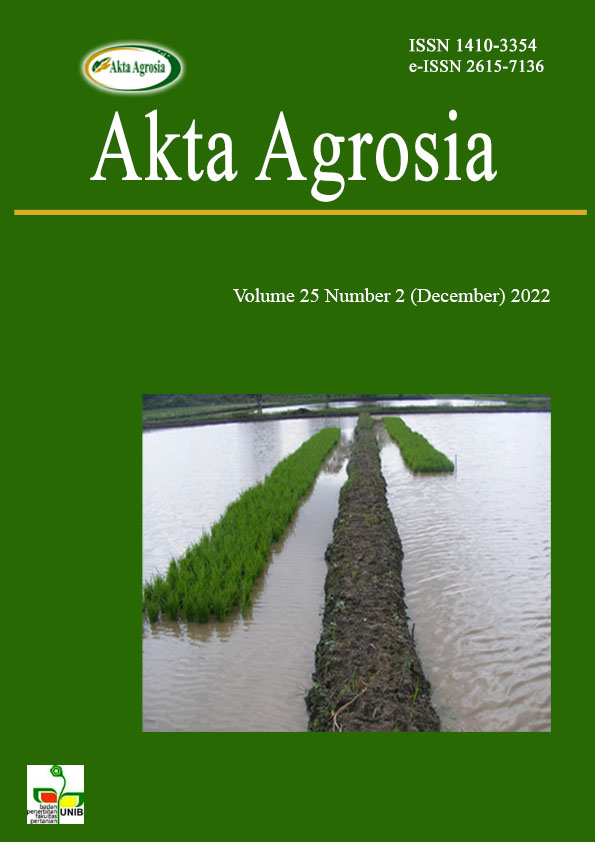Main Article Content
Abstract
The study of rice seedling resistance due to seed priming and seeding density under submergence stress condition was carried out to evaluate the effect of seed priming and also to estimate proper seeding population density to improve rice seedlings vigor under submergence stress condition. The เว็บสล็อต | R4shub experiment was conducted in tidal freshwater swamp of Sako in Rambutan District, Banyuasin Regency (3.067° S, 104.8616° E). Randomized block design was used where the seeds were soaked into ZnSO4.7H2O solution as priming treatment, and then sown with three different seeding rates: 30, 40 and 50 kg ha-1. Three cultivars consisted of Inpara 3, Inpara 5 and Ciherang were tested. The observation was carried out until 4 weeks after sowing to measure the seedling height, shoot dry weight, carbohydrate content in stem, and leaf chlorophyll. Results showed that all treatments indicated insignificant effect to all parameters. However, the highest result from all parameters was obtained from priming treatment. The higher seeding density the lower dry weight, carbohydrate and chlorophyll content. All three tested cultivars, Inpara 3 gave the best performance.
Article Details
Copyright (c) 2023 Firdaus Sulaiman, Rujito Agus Suwignyo, Mery Hasmeda, Andi Wijaya, Irmawati Irmawati

This work is licensed under a Creative Commons Attribution-ShareAlike 4.0 International License.
Authors who publish with this journal agree to the following terms:
- Authors retain copyright and grant the journal right of first publication with the work simultaneously licensed under a Creative Commons Attribution License that allows others to share the work with an acknowledgement of the work's authorship and initial publication in this journal.
- Authors are able to enter into separate, additional contractual arrangements for the non-exclusive distribution of the journal's published version of the work (e.g., post it to an institutional repository or publish it in a book), with an acknowledgement of its initial publication in this journal.
- Authors are permitted and encouraged to post their work online (e.g. in institutional repositories or on their website) prior to and during the submission process, as it can lead to productive exchanges, as well as earlier and greater citation of published work (See The Effect of Open Access).
